5 Best 6000m Peaks in Nepal
Nepal has around 1310 peaks above 6000 meters. In Nepal, a large number of these 6000m climbing peaks are open for climbing. The Nepalese government and the National Mountaineering Association (NMA) have placed restrictions on climbing these 6000m peaks. An individual from the Nepal Mountaineering Association, for example, causes administrators to sort out peak ascending efforts across the country. The 6000m Climbing Peak allows inexperienced climbers to tackle a Himalayan pinnacle without having to plan a lengthy expedition. Because they are on trekking routes, several of them are referred to as 6000m trekking crests.
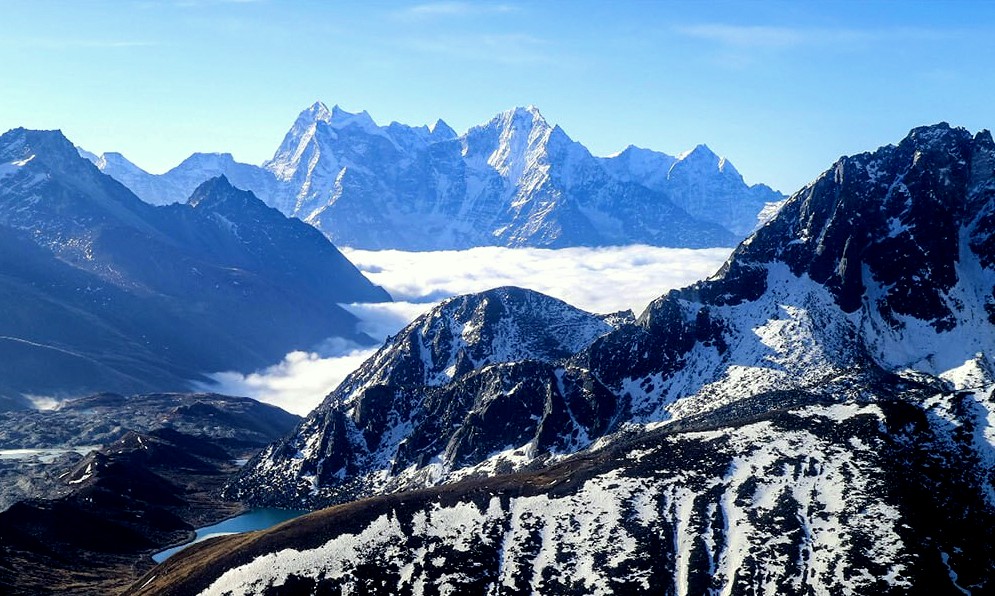
Despite the fact that these summits aren't as lefty as their 7000m–8000m neighbors, many of the ascensions are just as demanding and daring. These are small mountains by Himalayan standards, but on a larger scale, a couple of them are unfathomably taxing ice and snow maneuvers with high expectations. When ascending 6000m peaks for our guests, we expect the understanding of ascending equipment to be furnished with top-notch mountaineering gear.
Mera Peak, Lobuche East, and Island Peak in the Everest Region are the most popular 6000m climbing peaks in Nepal. There are also other 6000m Climbing Peaks scattered around Nepal such as Pisang Peak, Chulu Far East Peak, and many more. Autumn and spring are the greatest seasons for moving in Nepal's peaks. Winter climbing, on the other hand, is becoming increasingly popular among experienced climbers as snow conditions improve.
Mera Peak
Mera Peak climbing is one of Nepal's most accessible and pleasant mountains for peak climbing. It is a beautiful peak that rises to a height of 6476 meters. Mount Mera is Nepal's highest climbing peak, making it a popular destination for climbers. Mera Peak journey gives spectacular views of all the adjacent 8000m giants, including Mt. Everest, Mt. Lhotse, Mt. Cho Oyu, Mt. Makalu, and Mt. Kanchenjunga, as well as several other strikingly gorgeous 6000m and 7000m peaks, such as Mt. Baruntse and Mt. Ama Dablam, from its top due to its location.
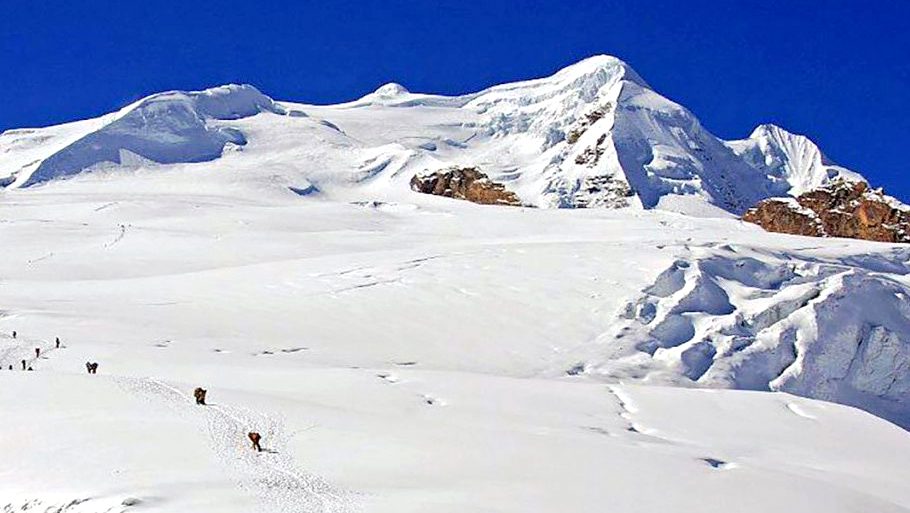
The North Face is the most common route for climbing Mera Peak in Nepal, and it is quite easy for novice climbers. It's a fantastic way to get a taste of a Nepalese trip. Because this north-face climbing route crosses a high-altitude glacier, snow conditions are critical for safety and a successful summit attempt. The summit day is lengthy and demanding, necessitating a high degree of fitness in order to complete the climb safely and successfully. The best climbing seasons are September to December and March to June. Mera Peak Climb is a primary aim for many commercial excursions in Nepal due to its long climbing season, reasonably straightforward route, and breathtaking scenery from the summit. A Mera peak adventure, on the other hand, offers a more private climbing experience in Nepal because of its isolation.
The best times to climb Mera Mountain in Nepal are in the spring (March, April, and May) and fall (September, October, and November). If enough climbers are eager to take on the challenge, we may run the trip even in the winter. You will arrive in Lukla after a 35-minute alpine flight. The next day, you'll begin your trek up Mera Peak through Hinku Valley. We also constructed Mera La base camp at 5400 meters for climbers with no prior experience or who were unable to advance quicker for some reason.
Height: 6,476 m and 21,247ft
Location: Khumbu Region, Sagarmatha, Nepal
Best time: Spring (April, May) and autumn (October, November)
Latitude: 27°46’27”N
Longitude: 86°54’40”E
Himalayan View : Mt.Makalu, Mt.Baruntse
Lobuche Peak
Climbing Lobuche Peak, on the outskirts of Mount Everest, is a popular activity in Nepal. Lobuche Peak Climbing is more difficult than Island Peak Climbing; it is a technically difficult trek. Climbing Lobuche Peak will take you to a height of almost 20000 feet; the climb will be arduous, but with the right instruction, you will reach the summit. This climb could be added to your Everest Base Camp Trek If you want to experience both destinations in one package.
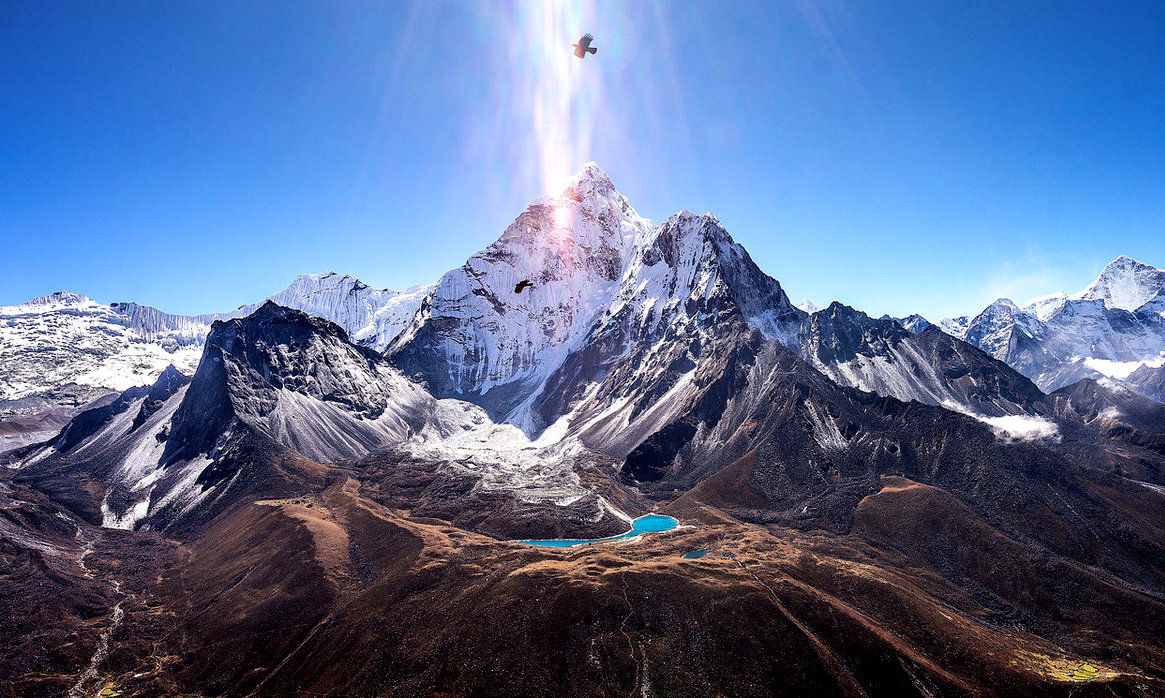
Climbing Lobuche East Peak is an excellent choice for your first Himalayan adventure. It's a beautiful peak with breathtaking views from the top. Lobuche Peak contains two significant summits, Lobuche Far East and Lobuche East Peak, and is located near the Khumbu Glacier. At a latitude of 27°58'08" N and 86°47'05" E, the huge Louche East summit stands at 6119m (20,062ft). The cost of a permit is quite minimal, and the top is slightly secluded, giving you more solitude. In the Khumbu Valley, you'll have a fantastic view of Lhotse Face, Everest, Ama Dablam, and many more 6000m peaks. The normal route up the southeast Ridge gained popularity after Mr. Laurice Nielson and Ang Gyalzen Sherpa made it to the top from this route at 13:00 on April 25, 1984. From the panel to the Khumbu Glacier, the South, and Southeast Ridges form a distinct rock triangle. The ridges are immediately recognized from the hike due to lateral moraines with stone markers. It's one of our classic tea house treks, replete with base and high-camp sleeping.
The best times to climb the rugged Lobuche summit, which stands at 6,119m (20,062ft), are in the spring (April, May) and fall (September, October, and November). Lobuche East Peak climbing is available as a guided climbing excursion. The East peak of Lobuche is more difficult than the Island or Mera heights. So get ready as though you've submitted Island or Mera before. Climbing the east summit of Lobuche is not solely for beginners; some prior experience is required.
Height:West: 6,145 m (20,161 ft.) and East: 6,119 m (20,075 ft.)
Location: Khumbu Region, Sagarmatha, Nepal
Best time: Spring (April, May) and autumn (October, November)
Latitude: 27°57’30”N
Longitude: 86°47’35”E
Himalayan View: Mt. Everest, Amadablam, Lhotse, Nuptse, Annapurna, Fishtail, Dhaulagiri, etc.
Island Peak
Imja Tse, also known as Island Peak, is a mountain in eastern Nepal’s Himalayan. The mountain was given the name Island Peak by Eric Shipton's team in 1951 because it appears to be an island in a sea of ice when observed from Dingboche. The summit is basically a prolongation of the ridge that drops from the south end of Lhotse Shar.
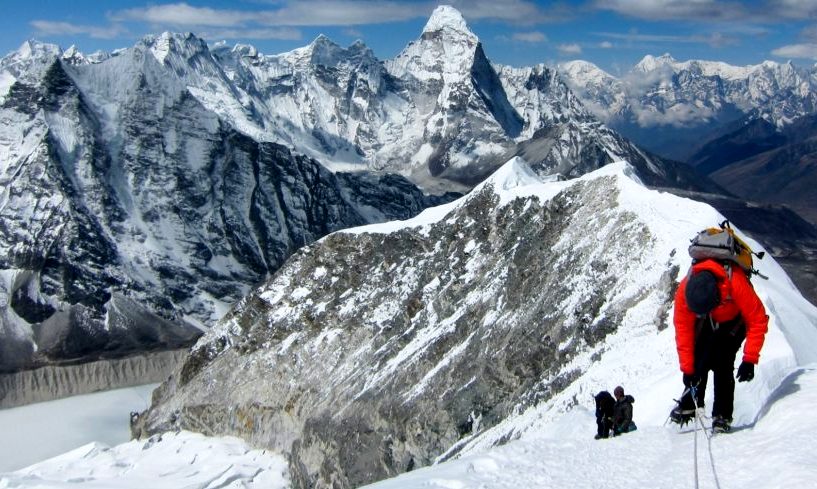
If you've ever wanted to climb a technical 6000-meter Himalayan peak, this well-known mountain could be able to grant your wish. In fact, Edmund Hillary and Sherpa Tenzing utilized it as a training peak in 1953, and the route they established is still used today. Island Peak is still a popular training peak for clients attempting Mount Everest since many of the abilities required are similar, such as bridging crevasses with ladders and using jumars on a fixed line.
The views from the summit of this mountain are breathtaking, made all the more unforgettable by the stunning airy ridge climb to the top.
Height: 6160 m and 20210 ft
Location: Khumbu Himal/ Region
Best time: Spring (April, May) and autumn (October, November)
Latitude: 27°55’15”
Longitude: 86°56’14”
Himalayan View: Mt.Everest, Mt.Lhotse, Mt.Pumori, and Kongde
Pisang Peak
Climbing Pisang Peak is a spiritual adventure in the Himalayas. Above Pisang lies Pisang Peak, a pyramidal trekking summit. Manang is a village in northern Nepal that is part of the Annapurna Circuit. In the tremendous Himalayas, there are over 414 peaks open for mountaineering. Pisang Peak, on the other hand, attracts the greatest number of visitors each year. It stands at a height of 6091 meters (19,970 feet). It is located at 28°38’46” N / 84°11'18" E in Nepal's Annapurna region. The climbing on Pisang Peak is classified as Peu Difficult, which implies it is a relatively easy climb that requires little belaying.
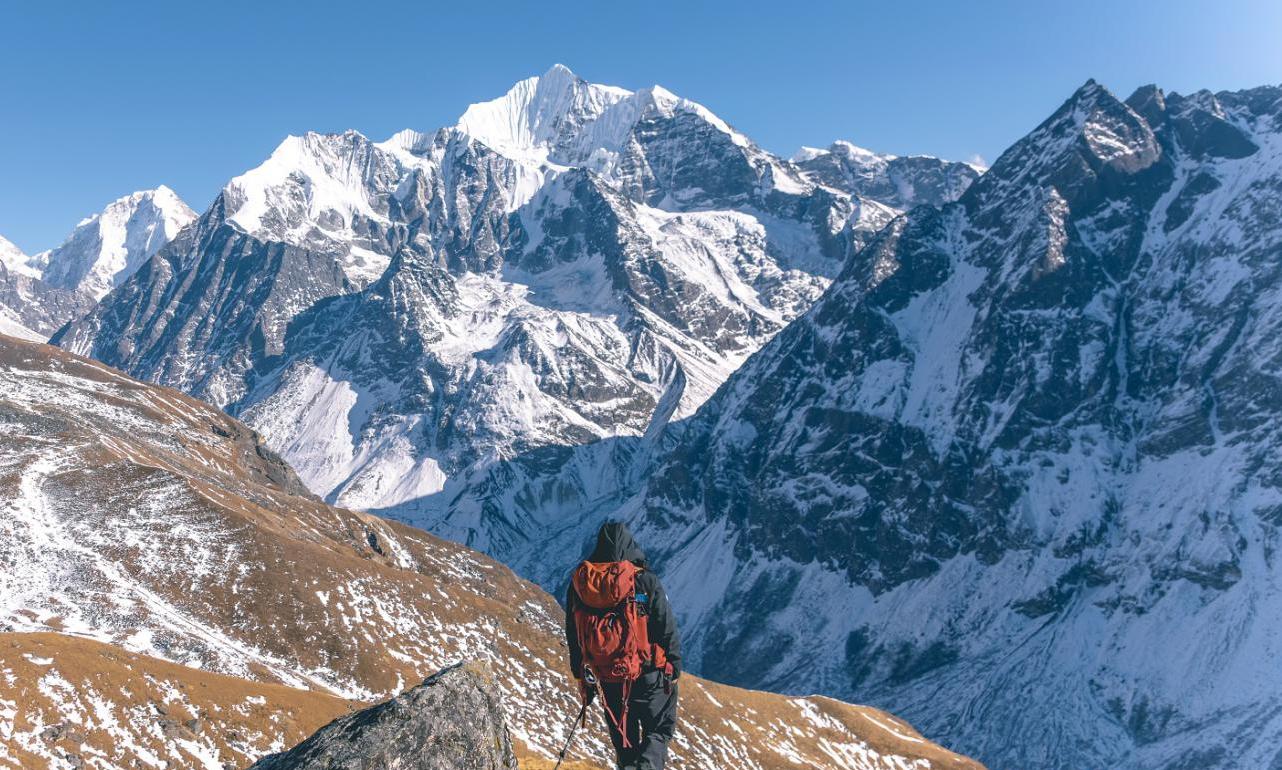
A German Expedition team made the first ascent of the Pisang summit in 1955. The same Expedition crew then successfully climbed Chulu East. The view from the peak is much more interesting. It appears to be a curving ridge, with the face above Pisang representing the valley's truncated southern end.
The route across the upper Pisang valley passes through sparse trees before arriving at a Kharka, which serves as a decent base camp location. The steep trail that leads to upper Pisang (3300m) via Leddar. Climbing Pisang Peak provides spectacular views of Annapurna. Tilicho Peak, Annapurna II and IV, Ghangapurna, and the Glacier Dome are some of the most famous peaks in Nepal. Pisang Peak is extremely well-known as a tourist destination.
Along the Annapurna region, Pisang Peak offers a superb blend of both climbing and trekking.
Height: 6091 m and 19,970 ft
Location: Manang/ Annapurna Region
Best time: Spring (April, May) and autumn (October, November)
Latitude: 28°38’46”N
Longitude: 84°11’18”E
Himalayan View : Annapurna, Gangapurna, Manaslu
Chulu Far East Peak
The Chulu East Peak Ascending (6584m/21,601ft) is located in the northern part of the Annapurna massif, at 28°44'09"N and 84°02'10" E. Because of its beautiful surroundings, tough elements, a breathtaking 900m ascending route, and easy access to the top, this objective climbing is second to none in Nepal. Chulu East 6429, Chulu Far East 6029m, and Chulu West 6584 are all part of the Chulurange. Peak Chulu East offers views of Annapurna (I, II, III, and IV), Gangapurna, Glacier Dome, Dhaulagiri, Tilicho Peak, and Mt. Manaslu. For the first time, a German team used the Northeast Ridge to climb Chulu Far East in 1955. In 1979, Dick Isherwood and John Noble climbed Chulu East for the first time using the Northeast Ridge. It's part of the Manang Himal, which also comprises the Chulu East and Chulu West Peaks.
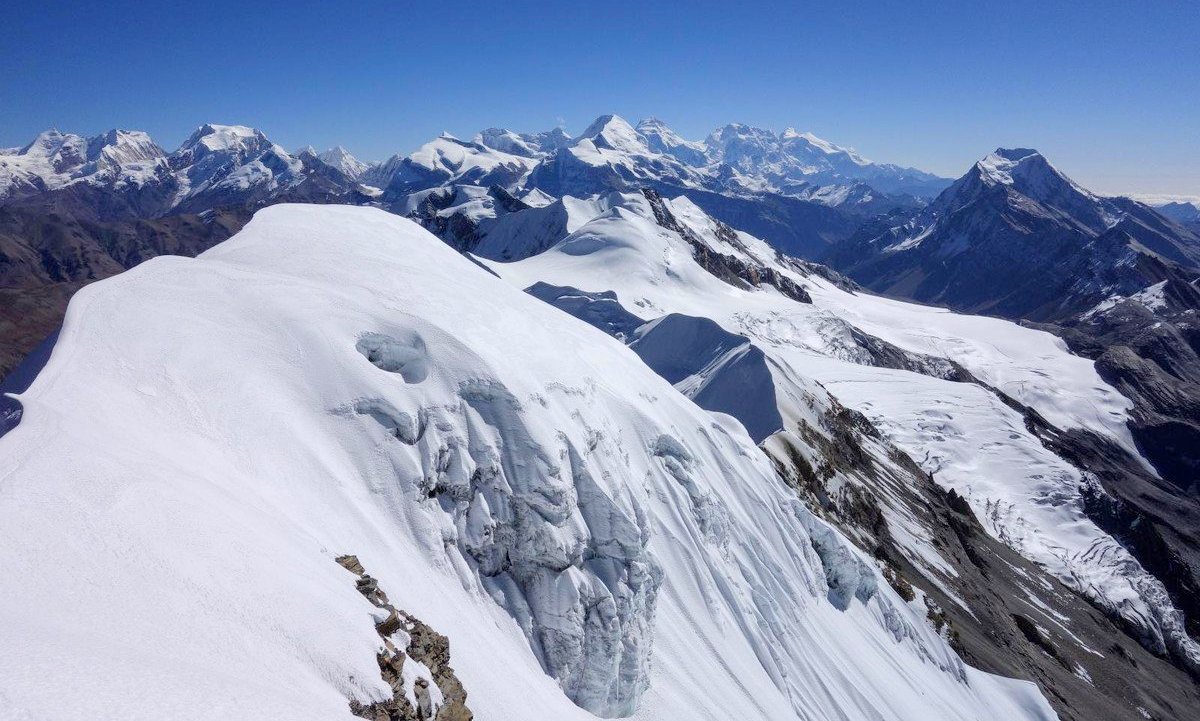
You'll need to hire a private vehicle to go to the base camp of Chulu East Peak. We start the journey after arriving at the Besisahar village, which leads you into the Marsyangdi Valley. The diversity of vegetation and fauna throughout the trek to Chulu East Peak Climbing is incredible. Traveling up the Annapurna Circuit from Annapurna Base Camp to Chulu Peak Base Camp will take around a week.
Height: (6584m/21,601ft)
Location: Annapurna Region
Best time: Spring (April, May) and autumn (October, November)
Latitude: 28°44'09'' N
Longitude: 84°02'10''E
Himalayan View - Annapurna Massif, Gangapurna, and Macchapucchre (Fishtail)
Preparing for 6000m Peaks in Nepal
Preparing for a climb on one of Nepal's 6000m peaks is an adventure that requires careful planning, training, and understanding of what the journey entails. Here's a comprehensive guide to get you started on your high-altitude adventure:
Physical Preparation
- Endurance Training: Start with cardiovascular exercises such as running, cycling, and swimming to build your stamina. High-altitude trekking demands excellent physical condition.
- Strength Training: Focus on the legs, back, and core muscles. Exercises like squats, lunges, and planks are beneficial. Don't forget to strengthen your shoulders and arms for carrying a backpack and using trekking poles.
- Altitude Training: If possible, train in high-altitude areas to acclimatize your body. Alternatively, use an altitude training mask or spend time in an altitude chamber.
Mental Preparation
- Research: Understand the specific challenges of the peak you're aiming to climb, including weather conditions, climbing routes, and technical requirements.
- Mental Resilience: High-altitude climbing tests your mental strength. Practice meditation or mindfulness to improve your stress management and decision-making skills under pressure.
Technical Skills
- Mountaineering Course: Enroll in a mountaineering course to learn or brush up on technical skills such as rope handling, glacier travel, and crevasse rescue.
- Navigation Skills: Learn to use a map, compass, and GPS. Familiarize yourself with the terrain and route of your chosen peak.
Gear and Equipment
- Personal Gear: Invest in high-quality climbing boots, a warm sleeping bag rated for extreme cold, a durable tent, and a down jacket. Ensure you have a comfortable backpack with enough capacity for your climb.
- Climbing Equipment: Basic climbing gear includes a helmet, harness, crampons, ice axe, and ropes. Depending on the peak, you might also need specialized equipment like ice screws and snow anchors.
- Rental vs. Purchase: Consider renting gear that you might not use frequently. However, personal items like climbing boots should be purchased and broken in well before your trip.
Logistics and Planning
- Permits and Regulations: Obtain all necessary permits and be aware of any regulations in the region you're planning to climb.
- Guide Services: Our professional guide will enhance your safety and success rate. They provide valuable local knowledge and logistical support.
Health and Safety
- Acclimatization: Follow a sensible acclimatization schedule to minimize the risk of altitude sickness. This often means a "climb high, sleep low" approach.
- Medical Check-Up: Get a comprehensive medical check-up to ensure you're fit for high-altitude climbing. Discuss your plans with a healthcare provider knowledgeable about altitude medicine.
- Insurance: Purchase travel and rescue insurance that covers high-altitude trekking and mountaineering.
Cultural Sensitivity
- Local Customs and Etiquette: Respect the local culture and traditions. Learn a few phrases in Nepali to communicate with locals.
- Environmental Impact: Practice Leave No Trace principles to minimize your impact on the environment.
Preparing for a climb in Nepal is as much about building physical and mental resilience as it is about respecting the mountain and the local culture. With the right preparation, climbing a 6000m peak in Nepal can be an unforgettable experience that challenges and rewards in equal measure.
The Himalayas of Nepal offer an array of 6000m peaks that cater to a broad spectrum of mountaineers, from novices seeking their first high-altitude experience to seasoned climbers looking for a challenging ascent. Peaks such as Island Peak, Mera Peak, Lobuche East, Pisang Peak, and Yala Peak stand out not just for their elevations, but for the unique climbing experiences, breathtaking panoramic views, and the diverse technical challenges they present. These mountains are not only testaments to the beauty and majesty of the Himalayan landscape but also offer climbers the opportunity to hone their skills, experience the rich culture and hospitality of Nepal, and achieve personal milestones in the world of mountaineering.
FAQs: 5 Best 6000m Peaks in Nepal
Q: Do I need previous climbing experience to attempt these 6000m peaks?
A: Yes, while some peaks like Yala Peak may be suitable for beginners with basic trekking experience, most 6000m peaks in Nepal, such as Island Peak and Mera Peak, require climbers to have a good level of physical fitness and some prior trekking or climbing experience. Technical peaks like Pisang Peak demand proficiency in using climbing equipment and navigating glacier terrain.
Q: What is the best time of year to climb these peaks?
A: The best times to climb these peaks are during the pre-monsoon season (April to early June) and the post-monsoon season (late September to November). These periods offer the most stable weather conditions, clearer skies, and more favorable temperatures for climbing.
Q: Are permits required for climbing these peaks?
A: Yes, climbers need to obtain permits to climb these 6000m peaks. The permits are issued by the Nepal Mountaineering Association (NMA) or the Department of Tourism (DoT), depending on the peak. These permits include fees that vary based on the peak and the season.
Q: How long does it take to climb a 6000m peak in Nepal?
A: The duration of the climb varies depending on the peak and the chosen route. Generally, expeditions can range from 2 to 4 weeks, including acclimatization days and the trek to and from the base camp.
Q: What are the main risks and challenges when climbing 6000m peaks?
A: The main risks include altitude sickness, extreme weather conditions, avalanches, and crevasses. Climbers must be well-prepared, acclimatize properly, and be equipped to navigate through glacier terrain and deal with the thin air at high altitudes.
Q: What gear do I need for climbing a 6000m peak?
A: Essential gear includes a climbing harness, helmet, crampons, ice axe, rope, and suitable clothing for cold and windy conditions. You'll also need a sleeping bag rated for extreme cold, a high-altitude tent, and personal climbing gear. Many climbing teams also bring supplemental oxygen for higher altitudes, though this is not always necessary for 6000m peaks.
If you need any further information, please contact us by email: [email protected], Phone: +977- 985 100 5129 (WhatsApp)
#Tags
Tripadvisor
5.0910 reviewsGoogle
4.8110 reviewsFacebook
4.1 recommend44 ReviewsTrustpilot
4.1 Great(5 reviews)- Trusted by50K plus traveller




